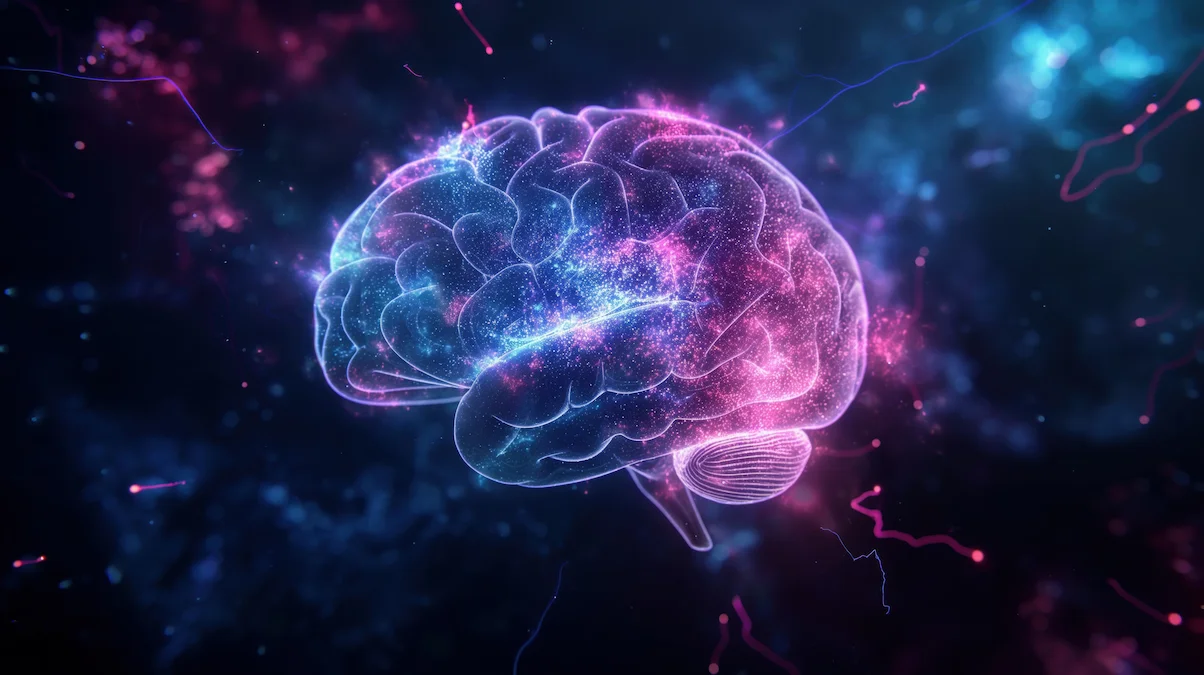This article explains the relationship between omega-3 levels and attention in adolescents.
Introduction
This article is directly based on the study published in 2023 in the journal European Child & Adolescent Psychiatry, titled «Red blood cell omega‑3 fatty acids and attention scores in healthy adolescents» by Pinar-Martí et al. This landmark research examines in depth the association between blood omega-3 fatty acid levels, particularly DHA and ALA, and attentional performance in healthy adolescents.
What are omega-3s and why are they important for the brain?
Essential fatty acids and cognitive development
Omega-3s are long-chain polyunsaturated fatty acids that must be obtained through the diet, as the human body does not synthesize them efficiently.
The most relevant ones include:
- DHA (docosahexaenoic acid): a fundamental structural component of neuronal membranes. It concentrates in brain regions such as the prefrontal cortex, which is involved in executive attention and self-control.
- EPA (eicosapentaenoic acid): has anti-inflammatory effects and participates in the regulation of neurotransmitters.
- ALA (alpha-linolenic acid): of plant origin, a precursor to the above, although with a very low conversion rate to DHA in humans.
Dietary sources of DHA and its role in cognitive development
DHA mainly comes from consuming oily fish (salmon, sardine, mackerel, tuna) and, to a lesser extent, from algae. Its incorporation into brain tissue occurs most intensely during intrauterine development, childhood, and adolescence, stages characterized by high synaptic plasticity and cortical remodeling.
Attention and brain neurodevelopment in adolescents
Adolescence represents a key period for the maturation of attention, particularly because of the changes experienced by the prefrontal cortex. This brain region, responsible for executive control, is actively reorganized during puberty, making it especially sensitive to environmental influences, including nutrition.
The high energetic cost of the developing brain, which can consume up to 20% of total energy expenditure, requires a continuous supply of essential nutrients. Among them, omega-3s stand out for their role in neuronal membrane fluidity, synaptogenesis, and efficient synaptic transmission, all key aspects for effective attention.

Subscribe
to our
Newsletter
Scientific evidence on how omega-3s affect attention in adolescents
Study design and methodology
A study published in European Child & Adolescent Psychiatry in 2023 evaluated the impact of DHA and ALA in healthy adolescents using blood biomarkers. This cross-sectional study included 332 adolescents aged between 11 and 16 years, assessed using:
- Measurement of fatty acids in erythrocytes (DHA and ALA) as a reflection of medium-term dietary intake.
- Attention Network Test (ANT): a computerized test that analyzes three attentional networks: sustained attention, orienting, and executive attention.
The data were controlled for sociodemographic variables, lifestyle, adherence to the Mediterranean diet, physical activity, alcohol and tobacco use, and parental educational level.
Results on DHA and attention
The results showed consistent associations between higher DHA levels and better performance in several dimensions of attention:
Variability in reaction time (HRT-SE)
- A lower standard error in response times was interpreted as more stable sustained attention.
- This pattern was statistically significant in adolescents in the highest DHA tertile.
Overall reaction time (HRT)
Participants with high DHA levels responded faster to stimuli, which is associated with greater attentional efficiency.
Conflict in executive tasks
Shorter response times to conflicting stimuli were observed, reflecting better executive attention function and cognitive control.
Results on ALA and impulsivity
Although ALA was not associated with improvements in sustained attention, a significant reduction in the impulsivity index was detected. This finding is especially relevant in clinical contexts such as ADHD or personality disorders, where inhibitory control is affected.
It is worth noting that blood ALA levels did not correlate with higher consumption of walnuts or other plant sources, which could be related to the low consumption of ALA-rich foods (such as walnuts) in the studied sample.
Proposed physiological mechanisms
Effects of DHA on attention
- Modulation of neurotransmitters: DHA influences dopamine and serotonin, which are involved in motivation, attention, and emotional regulation.
- Synaptic plasticity: Improves communication between neurons, facilitating rapid and precise responses to relevant stimuli.
- Reduction of brain inflammation: Its anti-inflammatory action may preserve the integrity of attentional networks.
Potential of ALA as a modulator of impulsivity
Although its conversion to DHA is limited, ALA could:
- Stimulate neurogenesis in cortical regions.
- Improve emotional regulation through antioxidant mechanisms.
- Reduce impulsivity by modulating prefrontal dopaminergic activity.
Clinical recommendations on omega-3 consumption to improve attention
In pediatric and adolescent practice
- Encourage the consumption of oily fish at least twice a week.
- Assess nutritional status in patients with attentional difficulties.
- Include blood lipid profile analysis as a diagnostic tool.
- Consider DHA supplementation in cases of low intake or specific clinical conditions.
In mental health and neurodevelopmental disorders
The potential of ALA as an adjunct in treating impulsivity deserves further research, although current data invite consideration of its dietary inclusion in comprehensive interventions for adolescents with conduct disorders.
Study limitations and future directions
- Being cross-sectional, the study does not allow causal inferences.
- Randomized clinical trials are required to confirm these results and establish specific nutritional recommendations for attention.
Conclusion
Omega-3 fatty acids, especially DHA, play a key role in optimizing attention during adolescence, a critical stage of brain development. Their beneficial effects on sustained attention, response speed, and executive control position these lipids as essential components of a neuroprotective diet.
ALA, although with more modest effects, could have therapeutic value in regulating impulsivity, opening the door to new nutritional strategies in the field of youth mental health.
Healthcare professionals should consider dietary lipid profile as a modifiable factor in addressing attentional and cognitive problems, integrating evidence-based nutrition as part of a comprehensive therapeutic approach.
Bibliography
- Dubnov-Raz G et al. (2014). The effect of alpha-linolenic acid supplementation on ADHD symptoms. Front Hum Neurosci.
- Fan J et al. (2002). Testing the efficiency and independence of attentional networks. J Cogn Neurosci;14:340–347.
- Handeland K et al. (2017). Fatty fish intake and attention performance. Nutr J;16:64.
- Hodson L, Skeaff CM. (2008). Fatty acid composition of adipose tissue and blood in humans. Prog Lipid Res;47:348–380.
- Janssen CIF, Kiliaan AJ. (2014). Long-chain polyunsaturated fatty acids from genesis to senescence. Prog Lipid Res;53:1–17.
- Pinar-Martí, A. et al. (2023). Red blood cell omega-3 fatty acids and attention scores in healthy adolescents. European Child & Adolescent Psychiatry, 32:2187–2195. https://doi.org/10.1007/s00787-022-02064-w
- Posner MI, Petersen SE. (1990). The attention system of the human brain. Annu Rev Neurosci;13:25–42.
- Van der Wurff ISM et al. (2016). Association between blood omega-3 index and cognition. Nutrients;8(1):13.
Frequently asked questions about omega-3 and attention
1. What role does DHA play in adolescents’ attention?
DHA (docosahexaenoic acid) is an essential structural component of the brain, especially in the prefrontal cortex, a region directly related to sustained, selective, and executive attention. Adequate intake is associated with improved attentional performance, faster reaction times, and greater stability in cognitive responses.
2. How does eating oily fish influence attention?
Oily fish is the main dietary source of DHA. Several studies have shown that adolescents who frequently consume oily fish achieve better results on attention tests, suggesting a direct relationship between this eating habit and more efficient attention.
3. Can an ALA-rich diet improve attention?
ALA (alpha-linolenic acid), of plant origin, does not show a direct association with improvements in sustained attention. However, it has been observed that elevated blood ALA levels may be associated with a reduction in impulsivity, which could indirectly favor better attention in situations requiring inhibitory control.
4. Is it advisable to supplement with omega-3 to improve attention?
In cases where DHA intake is low —either due to a restrictive diet or food preferences— omega-3 supplementation can be considered a valid strategy. However, it should always be prescribed and supervised by a healthcare professional, and accompanied by a comprehensive assessment of the patient’s attentional profile.
5. Is there solid scientific evidence on the effect of omega-3s on attention?
Yes. Studies such as the one by Pinar-Martí et al. (2023) have shown, using blood biomarkers and standardized neuropsychological tests, that a higher proportion of DHA is significantly associated with better attention in healthy adolescents. These results support the impact of omega-3s on attentional function.
6. What foods promote good attention from a nutritional point of view?
In addition to oily fish and walnuts, other foods that promote good attention include:
- Chia and flax seeds (sources of ALA).
- Omega-3 enriched eggs.
- Sea algae (an alternative source of DHA for vegans).
- Fish oil or krill oil (in supplements).
- Fruits, vegetables, and whole grains that complement an anti-inflammatory, neuroprotective diet.
If you liked this article about the scientific evidence of the impact of omega-3 on attention and cognitive performance, you will likely be interested in these NeuronUP articles:
“This article has been translated. Link to the original article in Spanish:”
Evidencia científica del impacto del omega-3 en la atención y el rendimiento cognitivo







 How the Abriendo Puertas Association works with NeuronUP: practical sessions for children and adults
How the Abriendo Puertas Association works with NeuronUP: practical sessions for children and adults
Leave a Reply